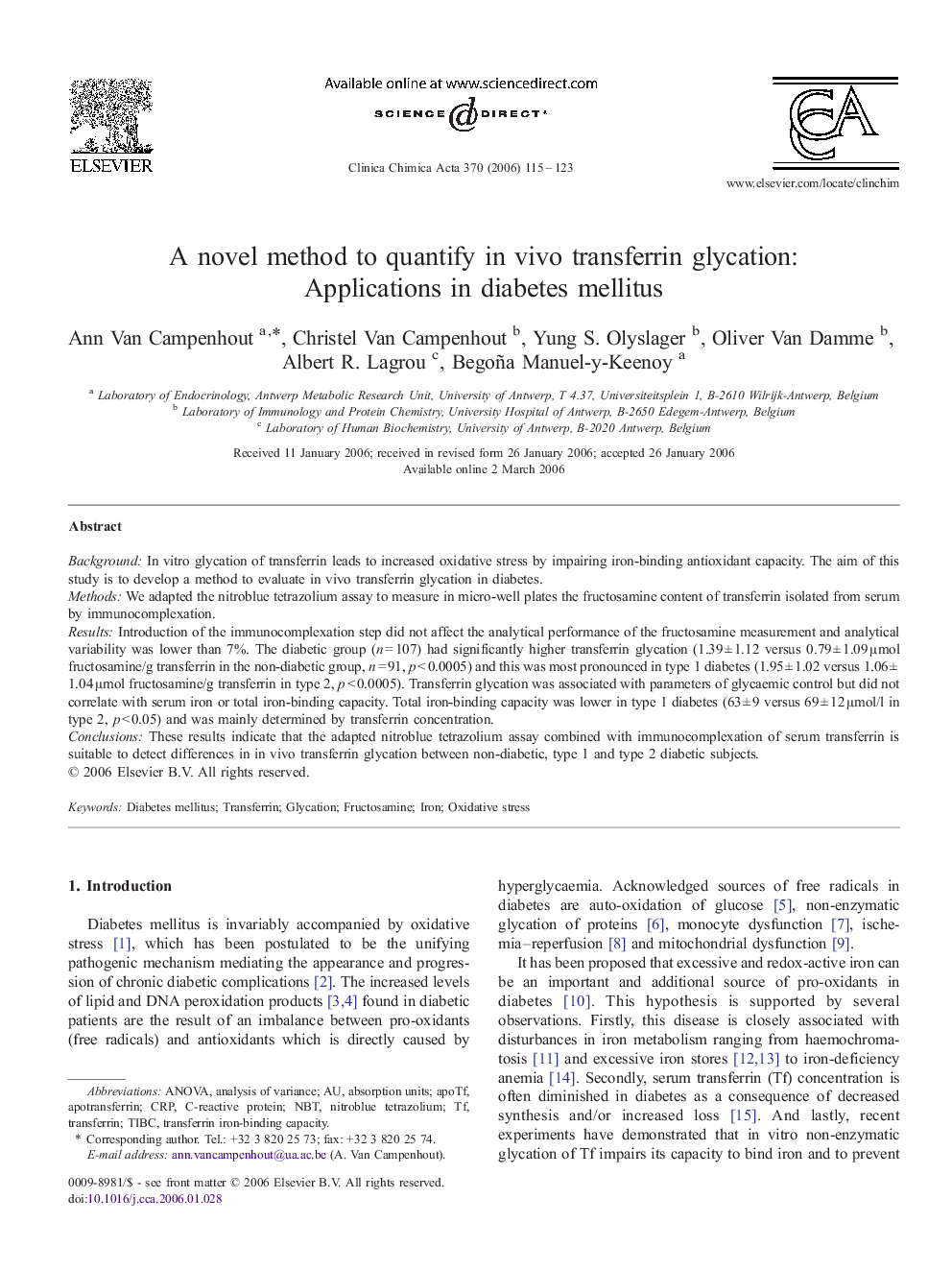| Article ID | Journal | Published Year | Pages | File Type |
|---|---|---|---|---|
| 1968035 | Clinica Chimica Acta | 2006 | 9 Pages |
BackgroundIn vitro glycation of transferrin leads to increased oxidative stress by impairing iron-binding antioxidant capacity. The aim of this study is to develop a method to evaluate in vivo transferrin glycation in diabetes.MethodsWe adapted the nitroblue tetrazolium assay to measure in micro-well plates the fructosamine content of transferrin isolated from serum by immunocomplexation.ResultsIntroduction of the immunocomplexation step did not affect the analytical performance of the fructosamine measurement and analytical variability was lower than 7%. The diabetic group (n = 107) had significantly higher transferrin glycation (1.39 ± 1.12 versus 0.79 ± 1.09 μmol fructosamine/g transferrin in the non-diabetic group, n = 91, p < 0.0005) and this was most pronounced in type 1 diabetes (1.95 ± 1.02 versus 1.06 ± 1.04 μmol fructosamine/g transferrin in type 2, p < 0.0005). Transferrin glycation was associated with parameters of glycaemic control but did not correlate with serum iron or total iron-binding capacity. Total iron-binding capacity was lower in type 1 diabetes (63 ± 9 versus 69 ± 12 μmol/l in type 2, p < 0.05) and was mainly determined by transferrin concentration.ConclusionsThese results indicate that the adapted nitroblue tetrazolium assay combined with immunocomplexation of serum transferrin is suitable to detect differences in in vivo transferrin glycation between non-diabetic, type 1 and type 2 diabetic subjects.
